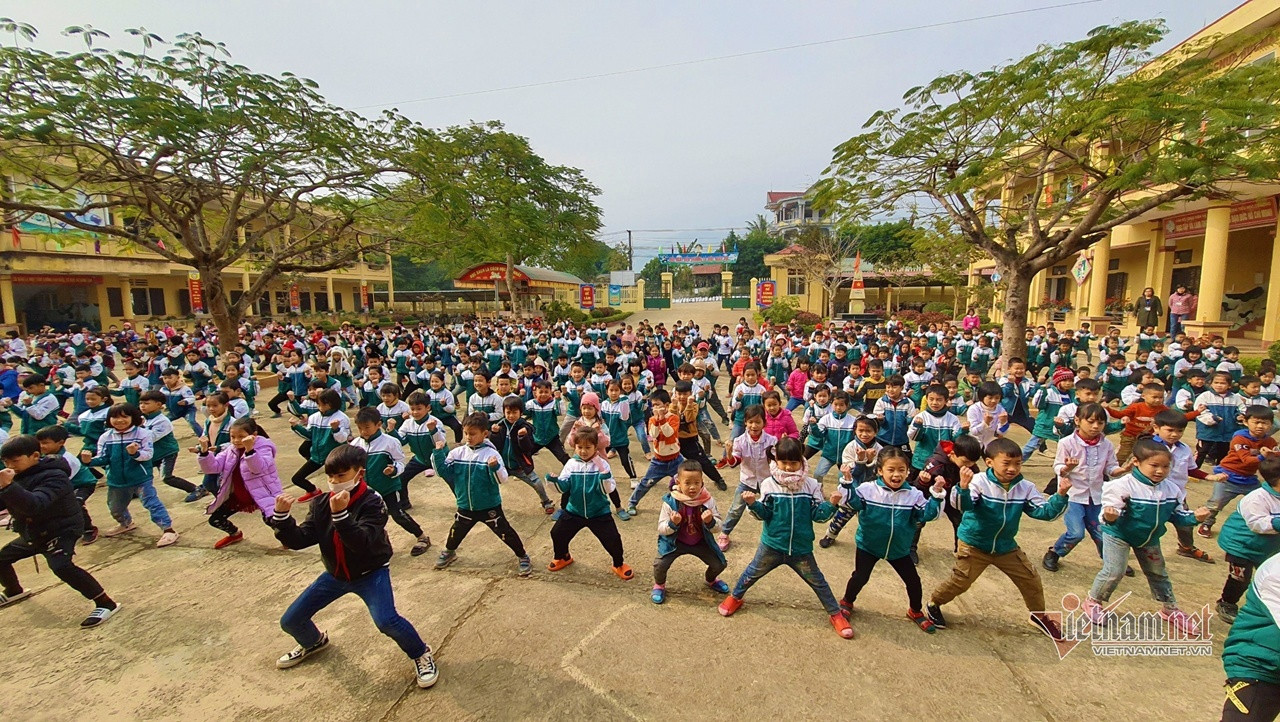As the school year ends, summer programs have become a top concern for many parents. Alongside classes in soft skills or the arts, traditional Vietnamese martial arts are increasingly being chosen by Hanoi families as a way for children to build physical strength, cultivate discipline, and foster national pride.

From communal houses to neighborhood culture centers, traditional martial arts classes continue to shine as a staple of grassroots sports in Hanoi. For sustainable growth, experts emphasize the need to integrate martial arts with education and culture as a long-term strategy.
According to Master Le Ngoc Quang, Vice President of the Vietnam Traditional Martial Arts Federation, Hanoi is home to about 350 clubs representing over 100 martial arts schools and styles. These dojos are active across numerous training sites and are drawing large numbers of young students during the summer break.
Beyond boosting health, martial arts introduce children to the heritage of traditional combat techniques passed down through generations. Though some may initially be shy, with the encouragement of instructors and mentors, they quickly grow more confident and enthusiastic, developing both physically and mentally.
Senior martial arts master Cao Ba Nhat of the Trung Son Martial Arts School, who teaches in Vinh Phuc and Hanoi, shared: “Opening martial arts classes not only enhances physical fitness but also creates a meaningful and safe space during the long summer. Instead of spending too much time on screens, children engage in movements, learn weapon techniques, sparring, and improve agility, confidence, discipline, and perseverance - all essential traits for future development.”
However, sustaining these classes is not without difficulty, particularly in generating long-term interest among parents and students.
“I devote myself to spreading national cultural values, helping children train and better appreciate the spirit of Vietnamese martial arts,” said Master Nhat.
At a martial arts class for children in a community room in Dai Mo Ward (Nam Tu Liem District, Hanoi), the sound of footsteps and shouts fills the hot summer air. Leading the session is 23-year-old Han Duy Khanh, founder of the Talented Youth Martial Arts Club.
Having studied traditional martial arts since childhood, Duy Khanh has spent over five years teaching young students. He credits the growing popularity of martial arts to its effective blend of physical activity and moral development. “After a few weeks, students become more confident, polite, and disciplined. Parents often say their children are less shy and more energetic, even reducing screen time,” he said.
Still, sustaining summer classes like these is a challenge. Khanh cites the lack of stable training locations, equipment, and funding. Many programs persist thanks to the dedication of instructors alone. He hopes local authorities will provide more support to bring martial arts closer to every community.
More than just strength or speed, martial arts also teach children life lessons in discipline, perseverance, and self-respect. This is evident in the story of 12-year-old Nguyen Thi Ngoc Anh, a student from Thanh Xuan Nam Middle School. “I used to give up easily. Now, I’m more patient and determined. I even dream of becoming a martial arts instructor to teach others,” she shared confidently.
Another student, 11-year-old Nguyen Dinh Quoc An from Van Yen Primary School (Ha Dong District), said he feels stronger, more flexible, and less anxious in crowds. “I wake up early every day to practice. I want to earn a new belt and perform like I did during the Spring Dance Festival on national TV last Tet. I’m proud this is our ancestral martial art,” he said.
These heartfelt reflections show how traditional martial arts help shape character and inspire national pride from a young age. According to Nguyen Danh Hoang Viet, Director of the General Department of Sports and Physical Training, traditional martial arts offer comprehensive value in fitness, morality, confidence, and patriotism. Embodying the “mind and martial arts” spirit, they form a vital link between sports, culture, and education - especially crucial in modern society.
To institutionalize martial arts in national physical education, the General Department is developing cohesive policies. These include implementing revised laws on physical training and sports, integrating martial arts into national programs on heritage and tourism development, particularly in remote and ethnic areas.
Nationwide, the Department is working with the Vietnam Traditional Martial Arts Federation to support more than 40 provincial federations and over 700 clubs and schools. They are also partnering with the Ministry of Defense and Ministry of Public Security to incorporate martial arts into military and police training.
One major initiative is bringing traditional martial arts into schools. Since 2015, pilot programs have been launched in selected provinces. Moving forward, the Department seeks to create scientific curricula tailored to each grade level and urges the Ministry of Education and Training to include martial arts as an elective physical education subject. Several sports universities have begun training martial arts majors to strengthen grassroots efforts.
The Department is also expanding club systems in and outside schools, incorporating martial arts into physical education classes, summer activities, and cultural festivals. To modernize outreach, a National Martial Arts Music Championship will debut in 2025, blending traditional forms with music to attract younger audiences.
In the long term, efforts are underway to internationalize traditional martial arts through regional and global student sports events.
PV